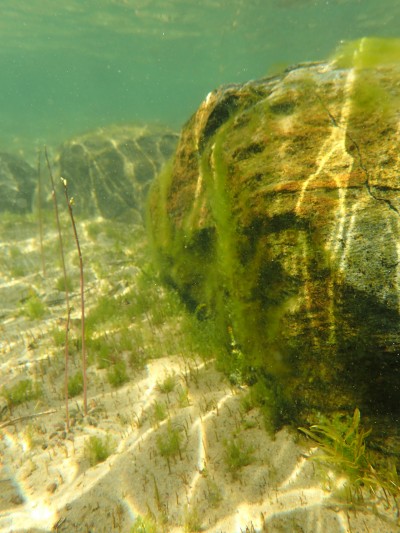Can We Save the Queen
Can We Save the Queen?

Lake George is an oligotrophic lake, defined as a waterbody with clear, deep water and little organic productivity, specifically minimal plants and algae growth. In the 1940s, Lake George was classified with the highest waterbody designation as Class AA-Special (AA-S) fresh surface water, indicating best usage as a source of drinking water, swimming, recreation and fishing.
Land use and development within the Lake George watershed is contributing to excessive algae growth in the lake. A rapid increase in a population of algae is defined as an algal bloom, which should not be visible in an oligotrophic lake.
The nutrients and pollutants that are impacting Lake George water quality and creating algal blooms flow into the lake from unmanaged stormwater; inadequately treated wastewater (includes onsite septic systems and municipal wastewater treatment plants); fertilizer and pesticide use; and other pollutants within the watershed. With the changes in Lake George water quality that we have all witnessed within the past 20+ years, we can only hope that municipalities and towns within the Lake George Park begin to make changes in their regulations and enforcement. In addition to municipal responsibility, residents, businesses (including motels) and lake visitors and guests must be aware of the importance of conscientious lake preservation.
A waterbody naturally ages over thousands of years. But the accelerated aging we are witnessing in Lake George is a consequence of human activity from land use and development around the lake. Water quality is compromised with high nutrient loads that result in a significant increase in plant and algae growth as well as the subsequent loss of water clarity and oxygen depletion. Increased water quality degradation could lead to changes in lake classification, from oligotrophic to mesotrophic or eutrophic. “Cultural eutrophication” defines an expedited aging of a water body and is indicative of the excessive algae growth seen in these photos.
Are the algal blooms in Lake George the “canary in the coal mine” demanding our immediate attention? How can we not recognize that the water quality changes that we are witnessing are so obvious? That alone should prompt action to preserve this nationally recognized resource that we are privileged to enjoy, in all its capacity.
Preserving Lake George water quality is certainly more important than a green, weed free lawn; an unobstructed view of the lake if it means that all trees and vegetation are removed from the property and shoreline for that view; and living with an antiquated, poorly designed, inadequately maintained or failing septic system.
Microscopic analysis of the algae sampled from the lake within the past 10 years has identified a variety of algae, including algae that grows in sewage treatment plants. The awareness of the genus of algae present in Lake George that identify ‘probable organic pollution’ indicates that there are outdated, poorly designed and/or failing septic systems on the lands surrounding the lake. This needs to be addressed.
Kathy Bozony has been documenting algal blooms in Lake George for over 10 years. She has taken thousands of underwater photographs and shared them with the Lake communities. The importance of sharing these photographs has been a dedicated undertaking, as the prevalence of excess algae in Lake George is not a given, but an anomaly for this type of lake. It is a fact that algae naturally occur in all waterbodies, but excessive algae growth does indicate a problem. We should be concerned.
Can we save the Queen of American Lakes? It’s up to you…
 Crandall - Public Library
Crandall - Public Library
